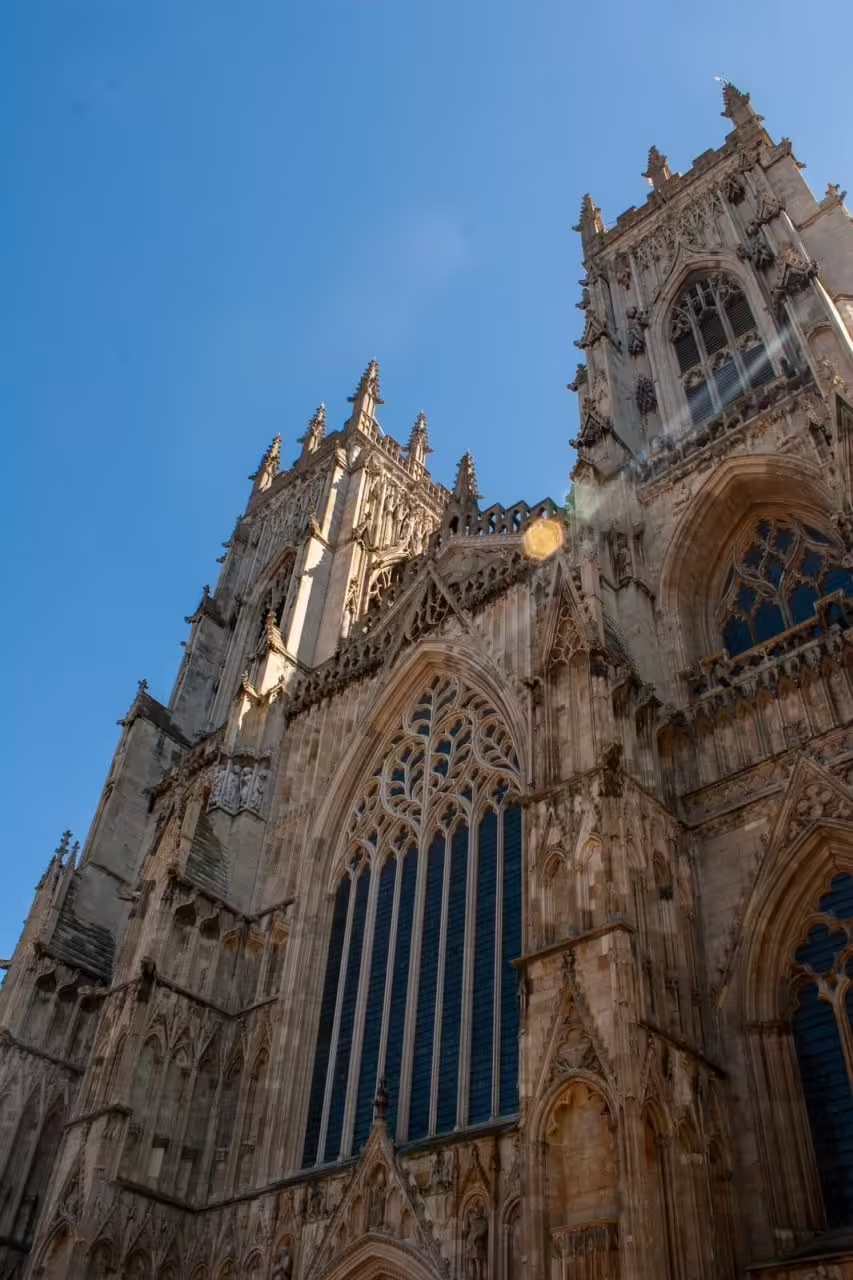York Minster, England
Address
York Minster, England
GPS
53.9623561, -1.0820834019803
Saint Peter’s Cathedral and Metropolitical Church in York, generally known as York Minster, is York Cathedral, England, and is one of the largest of its kind in Northern Europe.
It was in the year 627 when the first York Minster was built. Princess Ethelburga of Kent, a devout Christian who was on her way to Northumbria to wed King Edwin, was accompanied by Bishop Paulinus. Paulinus successfully persuaded Edwin to become a Christian, and the two of them later married and had their son baptized in a church that had been built for the occasion. Little is left of the original York Minster, a crude timber structure. A few years later, this wooden structure was replaced with a stone one and rededicated to St. Peter.
St. Wilfrid rebuilt the church in the year 670, but it was Egbert (732-766), the first officially recognized Archbishop of York, who made the cathedral school and library the envy of Europe. After the Minster Church was destroyed by fire in 741, it was promptly reconstructed by a magnificent new structure that featured at least 30 altars.
York was fought over by the Danes, the Saxons, the Norse, and the English during the course of the next few centuries. In 895, the Danish king Guthfrith converted to Christianity and was buried in the Minster, which had been spared from the pagan invaders.
William the Conqueror was crowned in London by Ealdred, a later archbishop. In 1069, Ealdred was laid to rest in the Minster, and only a few days later, the church was severely destroyed during a battle between the Danes, the Normans, and the Saxons.
York and the Minster suffered considerably during William’s “Harrying of the North,” but they suffered far more when a Danish assault entirely destroyed the church in 1075. Thomas of Bayeux, the new Norman Archbishop of York, began reconstruction on the Minster in 1080. Today, visitors to the Foundations Exhibit can see the remains of the original Norman church.
Again, a devastating fire struck the Minster in 1137. In 1154, construction began on a new choir and crypt, and a great chapel honoring St. Sepulchre was constructed to the nave. The new Gothic style that was sweeping Europe at the time left the Norman Minster looking dated and out of place.
In 1220, construction on the South Transept of the Minster began, followed by the construction of the North Transept a decade later. These transepts were constructed only a short time apart, but their styles couldn’t be more different.
The “Five Sisters” are a group of five elegant lancet windows atop five smaller gabled lancets that are a signature feature of the North Transept. Similar to the transepts, a massive central tower was constructed at the same time, but it was destroyed in a collapse in 1407. Construction on the Minster’s Chapter House, where daily operations were overseen, began about the year 1260. In the then-popular Gothic Decorated style, this structure excels.
Even the Five Sisters wouldn’t be able to compete with the ribbed timber roof and traceried stained glass windows of this building.
During the 1280s, the original Norman nave was dismantled and replaced. Exactly twice as tall as the original, the new nave was also the broadest in Europe. The choir, the only original section of the cathedral, was reconstructed in 1395.
In 1398, Richard II named Richard Scrope Archbishop of England and Wales. Scrope then organized a rebellion against Richard’s son and successor, Henry IV, in 1405, but he was eventually captured and beheaded outside of York’s city walls.
In 1420, construction began on a new central tower to replace the one that had been destroyed in 1407. (see above). The Minster’s rededication and completion of its rebuilding were celebrated in 1472. The chantry chapels and altars were destroyed by Edward VI, and most of the cathedral plate was lost, causing York Minster significant damage during and after the English Reformation.
However, these atrocities paled in comparison to those committed by Elizabeth I. Tombs, funerary brasses, memorials, altars, vestments, coats of arms, and stained-glass portraits were all removed from the Minster’s interior.
During the English Civil War, Parliamentary armies besieged York. The Parliamentary forces held a thanksgiving service in the cathedral after the city surrendered after the Battle of Marston Moor. Thomas Fairfax, a general in Cromwell’s army and a native of Yorkshire, managed to prevent the building’s destruction.
But even the structure couldn’t withstand the barrage of rapidly evolving styles. The Minster’s current floor, created by Lord Burlington in 1730, is a neo-classical Palladian style. To make room for the new marble floor, every tomb in the nave and several in the transepts and choir had to be torn down.
Even after more fires in the Victorian era and the wear and tear of time prompted continued restoration work during the 20th century, York Minster has maintained its appeal as a result of its remarkable architectural history and rich cultural significance.






